Academic & Research
Artificial Intelligence Applied to Vertical Urban Growth
Academic / Teaching Experience
Scientific JCR Publications
Media Publications, Lectures & Radio

Scientific JCR Publications
Ivan Pazos research work has been published in scientific peer-to-peer journals included in the Journal and Citation Report (JCR) index.

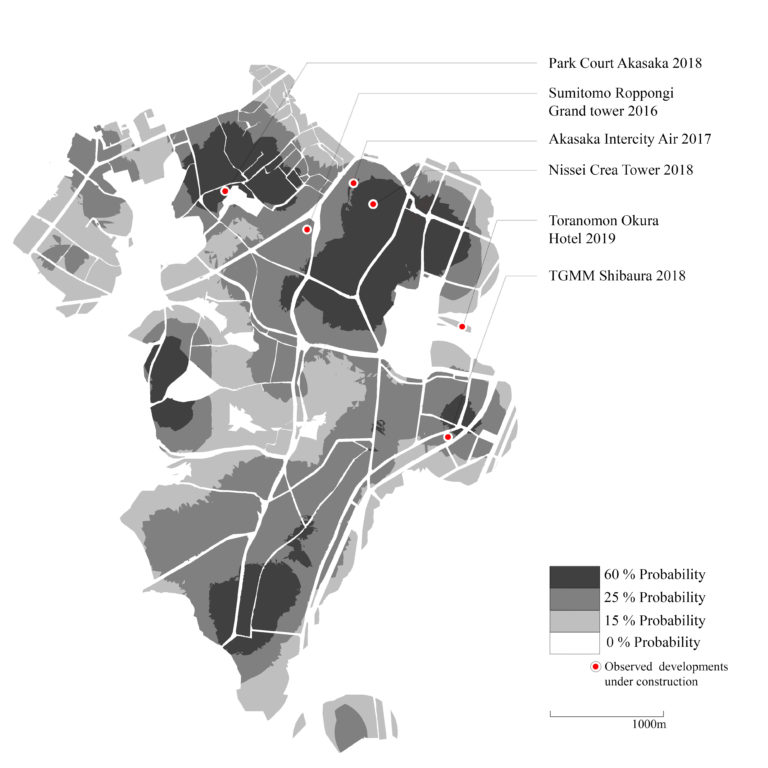
Artificial Intelligence Research Applied to the prediction of Vertical Urban Growth
Research regarding the use of Artificial Intelligence to predict Vertical Urban Growth.
Click to read JCR article on the Journal of Urban Planning and Development ASCE
“Predicting Vertical Urban Growth Using Genetic Evolutionary Algorithms in Tokyo’s Minato Ward”
LEARNING FROM THE HISTORICAL DATA, AS A KEY TO PREDICT THE FUTURE
Understanding the Historical Development of the Tokyo Skyline, as a key to predict future vertical developments. The data and learning process has been used as a base for the machine learning process of the evolutionary computation.
Click to read the JCR article on the Journal of Asian Architecture and Building Engineering:


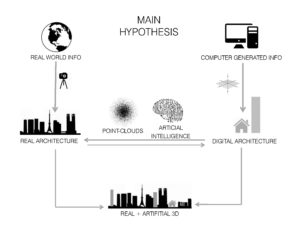

MERGING THE BOUNDARIES BETWEEN REAL AND ARTIFICIAL
Research regarding the use of Artificial Intelligence through genetic programming to auto-generate 3D models, from a previous design concept..
Click to read the JCR article on the IET Journal:
“Assisted surface redesign by perturbing its point cloud representation”

News and Media Publications
The research has been published in numerous media and news outlet around the world.
Deezen.COM
Algorithm developed to predict the vertical growth of cities
Researchers from Universidade da Coruña in Spain have drawn from nature to write an algorithm that is capable of anticipating the growth pattern of cities.
The algorithm uses historical and economic data from an urban area to predict what its future skyline will look like. It estimates both the number of high-rise buildings that will be constructed and where they are likely to be located.
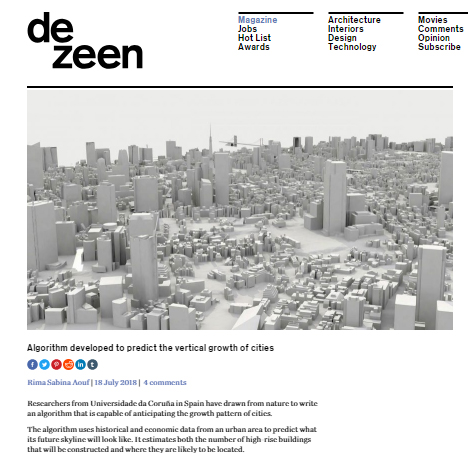
ARCHDAILY.COM
This Genetic Algorithm Predicts the Rise of Skyscrapers in Urban Areas
The growth and expansion of metropolitan areas has been evident over the past decade. Buildings are getting taller, and urban areas are getting larger. What if there was a way to predict this growth and expansion?
A new study by Spanish researchers from the University of A Coruna has discovered that the increase of skyscrapers in a city reflects the pattern “of certain self-organized biological systems,” as reported by ScienceDaily. The study uses “genetic evolutionary algorithms” to predict urban growth, looking specifically at Tokyo‘s Minato Ward. Architect Ivan Pazos, the lead author of the new study, explained the science behind the algorithm: “We operate within evolutionary computation, a branch of artificial intelligence and machine learning that uses the basic rules of genetics and Darwin’s natural selection logic to make predictions.”
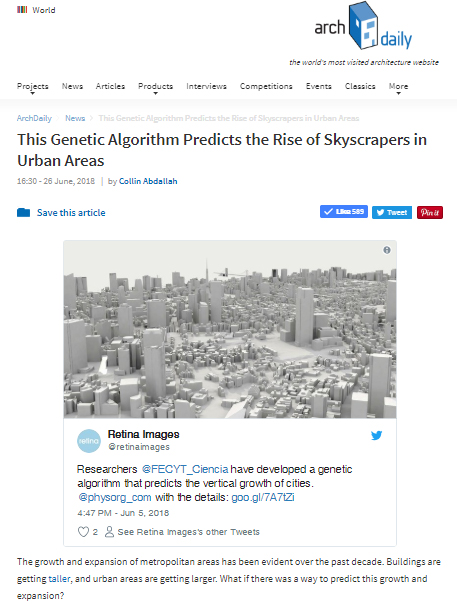
Aquí habrá un rascacielos (lo dice la genética)
Proyectar el futuro de las grandes ciudades, saber cómo van a crecer, y en que zonas se va a concentrar la actividad social y económica es fundamental para planificar los servicios públicos o las redes de transporte, por ejemplo. Y para hacerlo, para aventurarse a saber cómo va a ser el futuro, en ocasiones basta con observar cómo crecen determinados sistemas biológicos. Una vez más, la tecnología se inspira en la naturaleza.
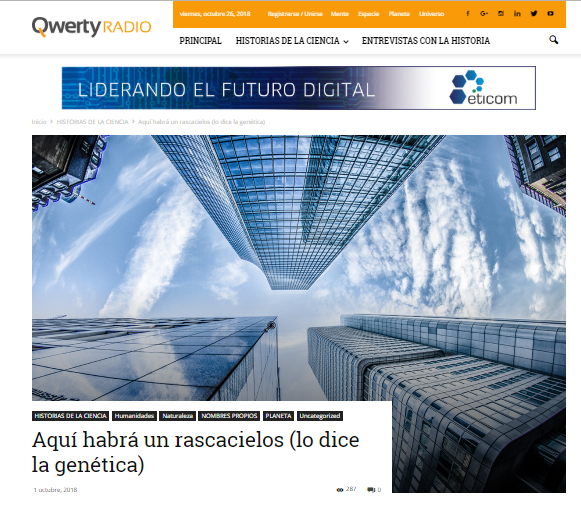
COMPUTER VOORSPELT CHAOTISCHE GROEI VAN MEGASTAD
Een computerprogramma kan de groei van steden voorspellen door de stad te zien als een organisme dat langzaam evolueert. Deze aanpak blijkt verrassend goed te werken, en kan stedenbouwkundigen helpen beter om te gaan met de chaotische groei van metropolen.
Het algoritme komt van de Spaanse Universidad de A Coruña en is uitgetest op een wijk in Tokyo, Japan. ‘De hele stad is te groot om het algoritme op toe te passen’, vertelt hoofdauteur Ivan Pazos Perez in een e-mail. De geteste wijk, Minato Ward, ligt centraal in de Japanse hoofdstad en groeide de afgelopen jaren hard. Vooral de hoeveelheid hoogbouw nam toe.
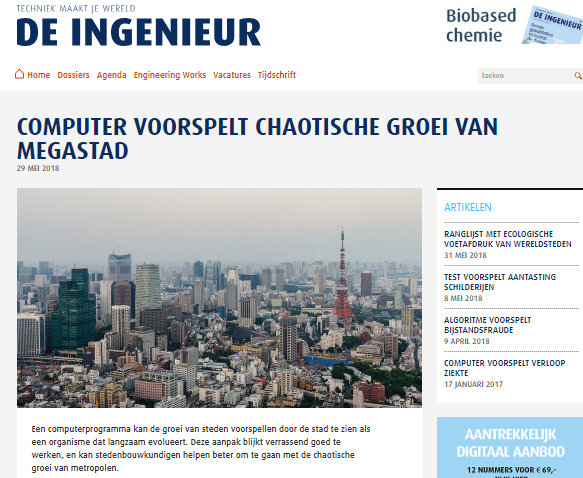
KYODO NEWS / JAPAN
PRESS RELEASE
The research has been widely published in numerous Japanese media.



Academic and Teaching Experience
Ivan Pazos has taught Architecture from 2011 to 2014 as a Full Time Assistant Professor at Korea University (Top 100 World Rank) and Hanyang University (Top 200 World Rank), both in Seoul, South Korea.
In addition he has lectured and participated in final critics at renowned Academic Institutions such as the Cooper Union, the NYIT, the Harbin Institute of Technology, Korea University, Hanyang University, Universidad de La Coruña, Keio University and Soongsil University.